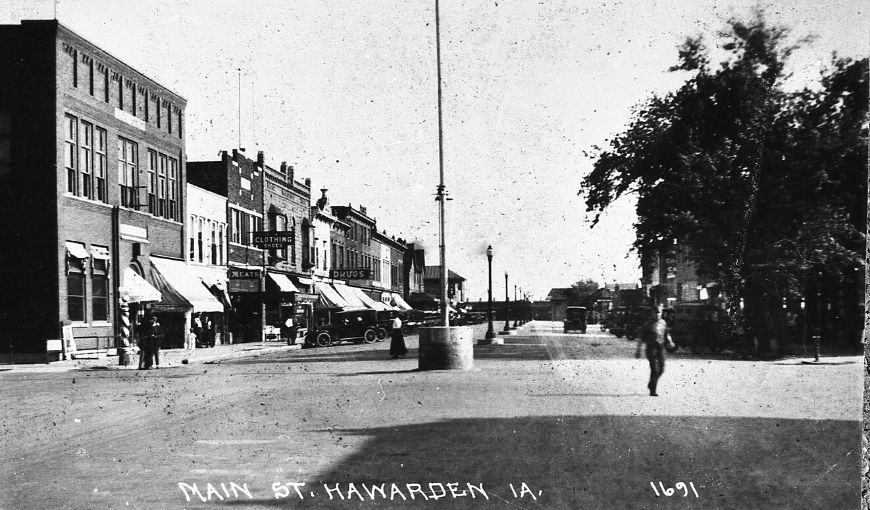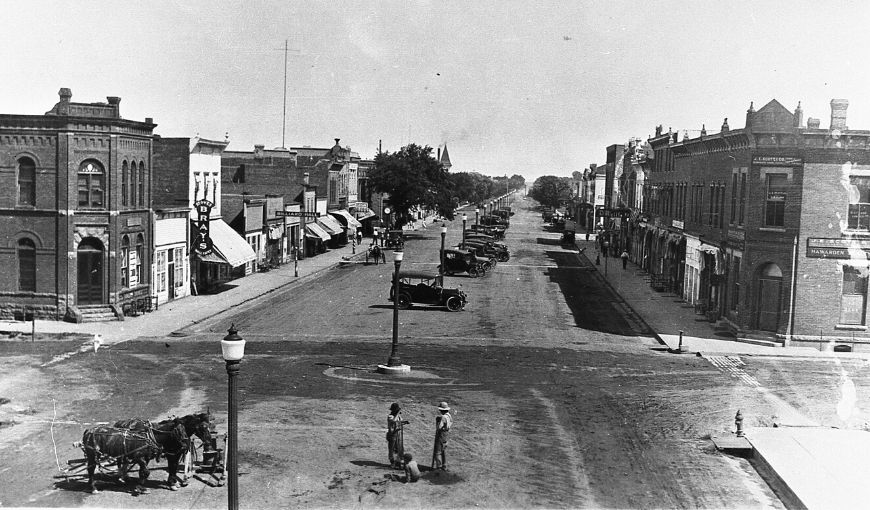Excerpts on this page were taken from the stories written By Mary Johnson and Cathy Noble to acknowledge the 125th birthday of Hawarden Iowa (2012). In total, Mary and Kathy wrote 50 stories that were published in the Hawarden Independent/Ireton Examiner. All of the stories can be found (here). We are including just a few of the hilights to give you an idea of the history of Calliope and Hawarden. We encourage you to take time and read all 50 stories! To navigate the book by chapters click here.

Chapter #1
Hawarden actually had its beginnings north of where it is now located, in Calliope. The settlement was named “Calliope,” because Fredrick Hubbel – one of the founders – had been to Sioux City and heard a calliope (accent on the second syllable) playing on a steamboat. The musical instrument had made quite an impression on him, so he suggested that the settlement be named “Calliope,” with the accent being on the first syllable instead! In 1869, Calliope was made up of the courthouse and three log cabins, and had a population of ten inhabitants. Indian uprisings caused the people to return to Sioux City, and abandon the settlement. They returned two years later and the settlement continued. More people began to settle in Calliope, and a hotel and more homes were built. A stage line was formed so that mail was possible as well as traveling to Sioux City.
Chapter #2
In 1872, Calliope was a prospering settlement complete with homes and businesses. Controversy arose however when in the eastern part of Sioux country there was a Dutch settlement called “Orange City.” The residents of Orange City felt that the county seat should be moved there – much to the irritation of the people of Calliope. On January 21, 1872, Henry Hospers, A.J. Betten, J. Pellemulder, and Judge Pendleton tried to persuade the officials of Calliope to relinquish their status as county seat. Their proposal was rejected, so on the next day 55 men with horses and sleighs converged on Calliope intending to “procure” the county books, the safe containing the county money, and the county seal. They were aided by men in 25 sleighs from the Rock Valley-Hull area. The “raiders” threatened violence unless their demands were met, and were well armed with guns and revolvers. Eventually they got their hands on what they thought was the key to the courthouse, but it turned out to be the wrong key. It was at that point that the raiders resorted to “drastic measures” and chopped open the lean-to where the safe was kept, backed a sleigh up to the opening, and loaded the safe and the record books onto it. On the way back to Orange City, the sleigh went through the ice on the Floyd River and had to be pulled out by a team of mules so it could be delivered to officials in Orange City. Finally, in January 1873, the Sioux County government was officially transferred to Orange City through a legal process including petitions and an election. In spite of the loss of the county seat, the town of Calliope kept growing, and in 1878 the Milwaukee Railroad established a station there. In the same year Calliope was platted and placed among the established towns of Iowa.
At the time, the Northwestern Railroad was looking to extend its line from Maurice through Calliope and the Dakotas, and planned to build a station in Calliope. Unfortunately they were unable to obtain a grant of land from the government, so they decided to build the station a mile south of Calliope. A new settlement sprang up around the railroad station, called “Hawarden.”
Chapter #11
History books show that as Hawarden grew, Calliope declined. Businesses located for years in Calliope closed up their shops and moved to Hawarden. In 1911, the post office of Calliope was closed and the town officially ceased to exist.
